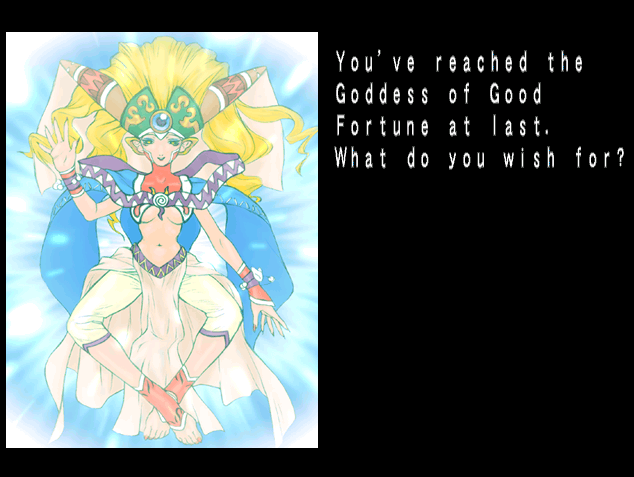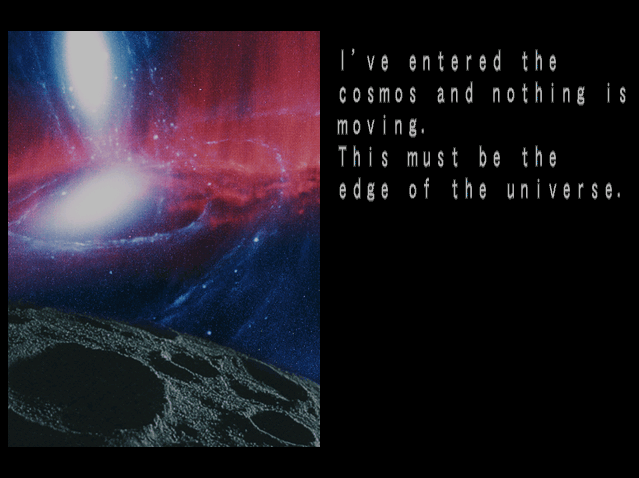I don’t actually play many computer games: I’m quite selective. Sure, I try out each and every “next big thing,” but in general, I’m left unimpressed. Sometimes, however, a computer
game is released that actually steals my life for months or years – something I come back to time and time again. Something that actually makes me into an addict, if just for a while.
Here’s my roundup of the top 10 computer games that stole my life:
10. The (Even More) Incredible Machine
 I suppose I brought it
upon myself. I’ve always been a fan of machines. When I was very young, kids TV programme Playschool used to
have what they called the marble machine. It was dropped later, much to my disappointment. The marble machine resembled an upright pinball table, into which – at the end of
every show – a bucket of marbles was deposited. The marbles would roll down through a series of see-saws and tunnels and tubes and rails and tracks, striking buzzers and bells and
little things that would light up. It was spectacular. I tried to build something comparable with my marble run, but without success.
I suppose I brought it
upon myself. I’ve always been a fan of machines. When I was very young, kids TV programme Playschool used to
have what they called the marble machine. It was dropped later, much to my disappointment. The marble machine resembled an upright pinball table, into which – at the end of
every show – a bucket of marbles was deposited. The marbles would roll down through a series of see-saws and tunnels and tubes and rails and tracks, striking buzzers and bells and
little things that would light up. It was spectacular. I tried to build something comparable with my marble run, but without success.
Two of my cousins used their expansive Lego sets to build a similarly complicated “Rube Goldberg machine,” once, and I
was insanely jealous, mostly – I think – because I hadn’t thought of it first. The idea of these millions of moving parts, complex and un-necessary motion, and things that clicked and
whirred… really appealed to me for the entirety of my childhood.
When The Incredible Machine was released in 1992, I persuaded my parents to buy it for me. No longer did I have to
spend hours finding exactly the right-sized paperclip to slide down a string I’d set up in my room – I could do it all on my computer! In The Incredible Machine, players aim to solve
puzzles by building and extending ludicrous machines. I eventually owned every release in the series. I’d use the freeform mode to build perpetual motion machines and to design
mind-bending puzzles that I’d generally fail to persuade my friends to attempt. I’d play through the puzzles time and time again, trying to find marginally more efficient ways to
solve them.
The Incredible Machine was probably the first computer game to genuinely “steal my life.” I dust off a copy of it or one of it’s sequels now and then and have a go, and I still adore
it.
You can probably download a copy from some kind of abandonware site, but if you’re looking for a similar fix right now, I can recommend Armadillo Run.
9. NetHack
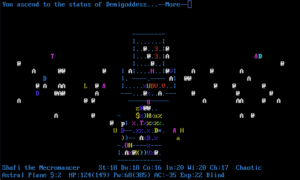 Since before I was born, people having been playing Rogue, the original top-down dungeon-crawling hack
‘n’ slash game. Rogue begat Hack, and Hack begat NetHack, which – miraculously – while I’d heard about, I didn’t end up playing for
the first time until about 2002.
Since before I was born, people having been playing Rogue, the original top-down dungeon-crawling hack
‘n’ slash game. Rogue begat Hack, and Hack begat NetHack, which – miraculously – while I’d heard about, I didn’t end up playing for
the first time until about 2002.
NetHack is free and open source. You could go download a copy right now and be playing it within a few minutes. But before you do
that, read my warning: it will consume you. The first dozen times you play it, or thereabouts, you won’t have a clue what’s going on: you’ll have pressed a few buttons and
gotten eaten by a grid bug or something. But then, usually after you’ve taken the time to read at least some of the manual, it’ll begin to click. You’ll have gotten the hang of it.
And it’s only then you’ll realise quite how huge the scope of the game is. Every time you play, the dungeon map is different. Potions, rings, wands and spellbooks – all carefully
identified in your last games – will change their purpose. The only thing you’ll find in common is your own corpse, littering the dungeon, from your previous incursion.
And it’s clever, too. There’s a saying in NetHack player circles – the dev. team think of everything. I remember once, my character was trapped in a dangerous situation and
surrounded by monsters. I was likely to die if I stayed put, so I scrambled through my inventory to try to find a clever combination of objects that might get me out of the mess I was
in. Suddenly it hit me: I had a potion of levitation and a wand of digging: I could drink the potion, float up to the ceiling, and then aim the wand upwards to tunnel my way to the
floor above and to safety! The plan worked, but sadly my newly-created hole appeared right underneath an altar on the floor above. The last thing I saw in that game was my gravestone,
which read: “Here lies Scatman Dan the Samauri, killed by a falling altar.” Yes, that means that someone on the development team anticipated that one day somebody might dig underneath
an alter, and ensured that the text was in there to accommodate. It’s insane.
NetHack stole months and months from my life, and – now and then – I still go back to play it. I’ve never won (“ascended”). Statistically speaking, based on the amount I play it, I
never will. But sometimes I get a little bit closer. Perhaps it’s that that makes it so addictive.
8. Super Mario Kart
 I wasn’t always such a Nintendo fanboy as
I am now. In fact, before I really embraced Nintendo-fandom, I had to get hold of a second-hand SNES with Super Mario World and Yoshi’s Island and… Super Mario Kart.
I wasn’t always such a Nintendo fanboy as
I am now. In fact, before I really embraced Nintendo-fandom, I had to get hold of a second-hand SNES with Super Mario World and Yoshi’s Island and… Super Mario Kart.
Ah, the original Mario Kart. Zipping round pixelated tracks in stupid little buggies with frustrating computer opponents who cheated – cheated, damn it – by firing power-ups they
hadn’t actually picked up. And the multi-player! Two players, head to head, taking on the pack and competing for the cup, or “bursting each other’s bubbles” in a one-on-one.
The rest of the franchise rocked, too – Mario Kart 64 for the N64 and Double Dash for theGameCube, as well as the Nintendo DS version – but it was the original Mario Kart that stole my
heart (and countless hours of my teenage years). Perhaps it was the cutseyness, or the not-quite-a-game-of-skill (but close enough that I could, after a while, royally whip everybody
I knew at it) quirkyness, or the instant “sit down and play”-ability of it… I don’t know… but Nintendo really hit this one on the head. Sneaky tricks such as saving your “feather”
power-ups for the secret routes through the tracks and bunny-hopping to “snake” your way around rough ground really added an extra something to it, too, and the music gave each track
an atmosphere all of it’s own, albeit one in bleepy 8-bit sound.
While I don’t play the original these days, I still enjoy an occasional blast on the sequels.
7. Ultima VII
 Nowadays, if you want to play a
huge, open, expansive, deep roleplaying game, you install Morrowind or Oblivion. Oblivion comes on a DVD-ROM and it’s huge. But back in the early-mid nineties, when we wanted that kind of
experience, we installed Ultima VII. Ultima VII came on only seven floppy disks (assuming that, like me, you bought the 3.5″ copy
rather than the 5.25″one) but packed a ludicrous amount of compression onto them – so much so that I vividly recall spending almost an hour watching the installer and swapping disks
when I first installed it on my 33MHz 386 with no maths co-processor.
Nowadays, if you want to play a
huge, open, expansive, deep roleplaying game, you install Morrowind or Oblivion. Oblivion comes on a DVD-ROM and it’s huge. But back in the early-mid nineties, when we wanted that kind of
experience, we installed Ultima VII. Ultima VII came on only seven floppy disks (assuming that, like me, you bought the 3.5″ copy
rather than the 5.25″one) but packed a ludicrous amount of compression onto them – so much so that I vividly recall spending almost an hour watching the installer and swapping disks
when I first installed it on my 33MHz 386 with no maths co-processor.
It was all worth it, though. Ultima VII’s game world dwarfed anything that came before it. Sure, you could rush through the game, sticking to the well-trodden paths, and not taking
any side quests and (if you were good enough to survive such an ordeal) complete the game within about 50 hours of playtime. Not including the expansion packs, of course. But that’s
not what the game was about – it was about taking your party along, being distracted by something moving in the woods, following it, losing it, finding something else interesting,
taking side quests, trying things out (there are a million and one easter eggs)… I particularly enjoyed injuring a monster I was previously unable to beat by having the strongest
member of my party drop all his weapons so that he could carry a cannon all the way from Lord British‘s castle (with other
members of the party carrying balls and powder) to the monster’s lair, firing it at the beast, handing him back his weapons, and getting on with the fight!
It’s deep and it’s clever and it’s spectacularly well-made. It was the first game to introduce the idea of “losing” things in your own backpack (chuck too much stuff in there, heaped
on top of itself, and it’s very easy to misplace your lockpicks… and why were you carrying all these spellbooks, anyway?).
It was over a year between me first getting this game and first finishing it. And even now, thanks to a great community and emulators like Exult, it’s possible for me to play it again, and, 13 years on, I still see new things in it. It’s a masterpiece.
6. Dune 2
 This list really couldn’t be complete without tipping
my hat to Dune 2. Dune 2 is pretty much single-handedly responsible for inventing the modern real-time strategy genre (no, Stonkers doesn’t count).
This list really couldn’t be complete without tipping
my hat to Dune 2. Dune 2 is pretty much single-handedly responsible for inventing the modern real-time strategy genre (no, Stonkers doesn’t count).
I got Dune 2 in 1993, and found it infinitely more playable than Doom (which was still good fun, at least in multiplayer: my friends
and I had endless games across null modem cables and via direct dial-up), which was released in that year. It was a strategy game with a heavy emphasis on war and scenarios, like
Battle Isle, which I’d already fallen in love with, but it was run in real-time. Real-damnit! If you weren’t quick or smart enough, the enemy could quite rightly sneak up on
you and trash your base (or, more annoyingly, your harvesters).
All the key elements that became the backbone of modern RTS games were there: a set of missions each with a video (well, animated to save space and processor cycles, of course)
introduction, each introducing more and more technology, the capacity to build and upgrade buildings, harvest resources, and buy troops, and fast and furious combat in between short
periods of “turtling” behind your walls and turrets. And it rocked: the three sides (Atredies, Ordos, and Harkonnen) were sufficiently different to make the game challenging whichever
way you played it, the scenarios were different depending on which side you played (for example, the Sardaukar – the Emporer’s crack troops – always sided with one of the other two
houses!), the missions were varied, the sandworms were vicious… and it had speech: speech in a computer game!
I played Dune 2 long before I read the Dune books, saw the film,
or played the original Dune computer game (which shares a lot more in common with the stories than Dune 2 – which is
just an abstract RTS game set in the “Dune” universe – but which I also adore), and I loved every minute of it. Eventually, my friends and I did battle through every one of the 13
levels as each of the three sides, and then we did it all over again with different strategies.
The only thing we could fault it on was the lack of a multiplayer mode. At that time, modern multiplayer games were just starting to appear (Doom’s multiplayer features, for example,
were added as an afterthought; it was thought that only a few people would ever bother to use and enjoy them – but it was this action that eventually made it essential that all first
person shooter games had a multiplayer mode), and I’d never seen or heard of a multiplayer real-time strategy game before. We played a lot of Dune 2, but our wishes for multiplayer
were only realised in 1995, with the next item on this list.
5. Command & Conquer
 Now here was a game that you could get into. Command & Conquer, released by Westwood
Studios – who’d already stunned us with Dune 2 – in 1995 made real-time strategy into a real art form. While on it’s surface just a re-write of Dune 2 (Arrakis is replaced by Earth,
the Atreides and Harkonnen are replaced by the GDI and the Brotherhood of Nod, Melange is replaced by Tiberium, and so on) it added so much more.
Now here was a game that you could get into. Command & Conquer, released by Westwood
Studios – who’d already stunned us with Dune 2 – in 1995 made real-time strategy into a real art form. While on it’s surface just a re-write of Dune 2 (Arrakis is replaced by Earth,
the Atreides and Harkonnen are replaced by the GDI and the Brotherhood of Nod, Melange is replaced by Tiberium, and so on) it added so much more.
For a start, it added real live action videos with hammy acting, blended right into the game. It also added a real sense of attitude: everybody who played through the GDI campaign
remembers the first mission where you have to play “Commando,” the ass-kicking sniper with a stack of C4 (the level itself isn’t terribly challenging, and mostly consists of
remembering to do all the actions in the right order, a-la Rick Dangerous, but it’s the attitude that made it stand
out). The music has attitude. The FMV actors have attitude. The military hardware has attitude. The whole game reeked of it. You genuinely felt like some kind of general, sending his
troops to the front line.
Even the installer had attitude: animations, speech, and a stereotypical movie “military supercomputer” user interface. The installer was simplified for the later Windows 95
Compatible (basically the game with a few patches on it) release of the game, and I resented them for it: that installer was still one of the coolest I’ve ever used.
It added lots of clever new features to the genre, too: transports that could have troops loaded into them, well-balanced superweapons, and the “right-click default action” idea that
because so popular for so many games for so long to come.
What really made it stand out to my friends and I, though, was the multiplayer features. By this point, we’d gotten the hang of setting up LAN parties at short notice. We had stacks
of null modem cables and even a few old network cards, scavenged from parts bins, and we knew IPX/SPX inside out (skills that would come in very useful when Duke Nukem 3D, one of the best multiplayer shoot-em-ups ever, would come out the following year).
So we played two player battles (by modem and null modem). And we played four-player battles (over networks of various kinds). And we modded the game (we made levels, we made new
weapons). And we got better at it. The potential for the game was limitless. Every weekend for several months the attic at my dad’s house became our warzone: battle after battle with
different strategies every time. I favoured engineer swamping and fast strikes at ill-defended construction yards. One friend preferred to tank rush. Another friend liked to turtle. A
further friend enjoyed the frowned-upon habit of harvester-baiting. We all had our own strategies, our own alliances, and our own favourite maps. And we played it to death.
4. (Open) Transport Tycoon (Deluxe)
 I’d played Railroad Tycoon, of course, because everybody who was anybody had played that. And I’d played
A-Train, which was a lot more obscure and with good reason – it wasn’t really very good. But I’d never really been bitten by the
transport simulation game until my dad – a transport consultant – bought me Transport Tycoon as an (unexpected) Christmas
present.
I’d played Railroad Tycoon, of course, because everybody who was anybody had played that. And I’d played
A-Train, which was a lot more obscure and with good reason – it wasn’t really very good. But I’d never really been bitten by the
transport simulation game until my dad – a transport consultant – bought me Transport Tycoon as an (unexpected) Christmas
present.
I was sceptical. How much fun could it really be? Laying roads and rails, sponsoring schemes in towns, and building a network of trains, buses, lorries, planes and ships sounded –
thanks to my understanding of “what daddy did” – a lot like work, rather than fun!
I played it non-stop. Despite it’s faults (stupid computer players, shaky pathfinding, etc.) it was a marvel: a clever, easy-to-learn, fun transport sim that you could play on many
different levels. At it’s simplest, you can lay point-to-point track and run trains around, making “choo choo” noises all the way. At it’s most complex, you can set up clever track
combinations to make efficient use of stations, provide passing points on single-track, flood valleys to use as canals, chain together stations to move cargo in a “leapfrog” method
with greatest efficiency, and choose the best combination of locomotives to prioritise your passengers over your freight.
Then came Transport Tycoon Deluxe, an “enhanced” re-release. At a glance it just provides some silly theming, but looking a little deeper you soon discover how much bigger the game
world just became: one-way signals – such a simple concept – enable the construction of far more advanced track configurations. The extra themes aren’t just themes; they provide whole
different experiences (such as having to deliver fresh water to towns in deserts in the “tropical” theme to allow them to grow).
I was still playing the occasional game of Transport Tycoon Deluxe in the early 2000s, when OpenTTD started to appear on the scene.
OpenTTD is an open-source remake of Transport Tycoon Deluxe, but, over the last few years, it’s exploded in size and now offers a lot more than official releases ever did: enter/exit
signal “blocks” allow for complex station approach/exit designs, a (brilliant) improved pathfinding algorithm makes it possible to design very advanced track/road layouts and still
have vehicles reach their destinations, electrified track is improved, stations can be “chained” together into larger stations, vehicles can “share” orders (like a symlink!), there’s
a load of new kinds of airport and heliport, and, perhaps most exciting of all – it’s possible to extend the game even further with “NewGRF” add-on packs. In particular, I like the
one which provides “realistic” British rail stock, including trucks with speed limits, believable diesel acceleration, and more.
And it’s still being developed: now and then I compile the bleeding-edge version from the repository, and it blows my mind. Trams are on the cards for a near future version, by the
look of things, as is the ability to customise the colours on individual subclasses of vehicle. Very new is the ability to build “on-road” bus stations, which is nice, and to have the
game automatically pause itself when it first starts (a popular option amongst micromanagers like myself!).
It’s thirteen years since the original Transport Tycoon was released, and I still regularly play the games derived from it. This is truly a “computer game that stole my life.”
3. Ultima Underworld II: Labyrinth Of Worlds
 Most of the games in this list stole my life simply because I kept coming back to them time and time again, even years after I’d finished them or thought I’d seen everything
there was to see in them. A couple of the games in this list stole my life because it took me so long to explore them fully – to do everything there was to do in them, to complete
them on the hardest difficulty level, etc.
Most of the games in this list stole my life simply because I kept coming back to them time and time again, even years after I’d finished them or thought I’d seen everything
there was to see in them. A couple of the games in this list stole my life because it took me so long to explore them fully – to do everything there was to do in them, to complete
them on the hardest difficulty level, etc.
Ultima Underworld II stole my life on both counts, but especially on the latter. It’s a real-time first-person
roleplaying game; something that – before Ultima Underworld – hadn’t been fully realised before (okay, okay, there was Dungeon Master…). In any case – what it provides is an immersive 3D dungeon experience with dynamic lighting,
bridges, moving floors and walls, secret doors, switches and triggered interactivity, the ability to “look” up and down, and other fantastic graphical and gameplay engine improvements
that wouldn’t be seen in the first-person-shooter genre until two years later, with the release of Rise of the Triad (and
then, it could be argued, not quite so beautifully).
It’s a non-linear, slightly combat-heavy RPG with lots and lots of character… and lots and lots of characters, too. It’s got a complex magic system, a surprisingly deep combat system,
bartering, the need to eat and drink and sleep, swimming… and lots of “the dev team thought of everything” moments when you, for example, weigh up your options in any particular
subquest: “There’s a Despoiler Demon guarding that key I need… I could fight him; wonder if I’ve got any potions that could help with that? Maybe I could steal the key and try to run
away? How good is a Despoiler’s eyesight? And can he swim?”
Better than that, it’s surprisingly big. About 8 hours into your first attempt at the game… and that’s a very variable amount of time, because there’s a lot to do and try if you want
to, being a non-linear game… just when you’ll be starting to think that you’ve gotten the hang of everything, you’ll come across a portal and you’ll find that the game is nine times
larger than you’d been lead to believe. The fun will be only just beginning.
The plot is complex and coherent, and you can genuinely feel like you’re “getting somewhere” if you need to. There’ll be monsters you can’t face but that you can come back later and
attack, puzzles that you can’t solve until you’ve found clues elsewhere, and a storyline that’ll make you laugh, and cry, and think.
It’s also the first game I ever played that made me physically jump with fright (it was the first time I found a highly-poisonous, dog-sized monster called a Dread Spider… little did
I know I’d blundered into a lair full of them…).
Ultima IV and Ultima VII (the later of which is also on this list) will always been my favourite Ultima games, but Ultima Underworld II did a better job of stealing my life. About two
years passed between first playing it and first finishing it (although I’d had a few “breaks” from playing it), and I still sometimes go back and play as an unusual character class,
or with a more or less heavy-handed approach. And it still pleases me.
2. Quake
 I bought Quake on the day of it’s release: June 22nd, 1996. It didn’t matter to me that I was on holiday at the time and wouldn’t be anywhere near my
computer for another four days: I had to have it then and there, just so I could enjoy the smell of the manual or something.
I bought Quake on the day of it’s release: June 22nd, 1996. It didn’t matter to me that I was on holiday at the time and wouldn’t be anywhere near my
computer for another four days: I had to have it then and there, just so I could enjoy the smell of the manual or something.
I’d been involved with the beta test for almost six months, and it’s chugginess had been instrumental in my insistence that I be allowed to upgrade my PC. I got it home and played it
non-stop until I’d finished all four campaigns on hard difficulty, and started on nightmare.
If this were any other game, that’s where the story would end. But Quake was special. After seeing how people had received Doom all those years ago, iD Games had put a lot of careful
thought into how Quake should work. Within weeks, I was playing multiplayer deathmatches and co-operative monster hunts with my friends. The following year, still playing it, my
college buddies and I would take control of the computer labs in order to have huge blast-fests with mods like Team Fortress
installed.
I made maps. I’d done this before in Doom and in Duke Nukem 3D, but Quake – with it’s actual 3D-ness – made
the whole process exciting again. I learnt enough C to write mods, and distributed them on the internet (one of my weapons, the Orgeslayer, a rotating-barrelled shotgun, still
occasionally appears in mod packs, and it surprises me to see my handle still floating around with it, complete with obsolete e-mail address).
And every week we’d get together and play the maps I’d created. Times changed, and new mods appeared, and we played them too. Quake Soccer was a classic, kicking each other’s
disembodied heads around a pitch. Rocket Area was a plain old blast-em-up distraction. Superheroes was a very cleverly-made adaptation. We played them all, and we played them to
death.
I played through Quake 2 and Quake 3, and quite a bit of multiplayer of
both, when I was at University, but the appeal was never quite the same – by this time, the Unreal Tournament series had
stolen my interest. Now and then I still play a quick game of Quake, though.
1. Civilization
 And so we come
to the number one life-stealing game for me, perhaps forever: Civilization (and it’s many sequels).
And so we come
to the number one life-stealing game for me, perhaps forever: Civilization (and it’s many sequels).
Let’s start by looking how I got into Civ (as it’s known to us veterans), though, because I’m in the unusual position of having a perfect memory of the first ever time I played it.
Back in 1991, my mum was subscribed to some kind of software club – you know, like those book clubs – that would send us a catalogue every month. In this particular month, they were
raving about Civilization, a new strategy/wargame (yes, that’s how they chose to describe it). Sounds interesting, so she bought it. This was the original, v1.0.0.0, proper boxes set
of Civilization. It came with a many-hundred page manual that just about squeezed into it’s big box, and four 5.25″ floppy (yes, actually “floppy”) disks. It could be run from the
disks, and we didn’t have a hard drive at the time (just a CGA [four colour] old 286) with 480K of RAM, so that’s how I’d have to play it – switching disks to watch the introduction
or to load up the help (Civilopedia).
The first time I ever played, it took me awhile to “get it.” I played as the Americans, and I had three cities that were doing okay when the Zulu first invaded my territory, bringing
with them three or four units phalanx. I managed to fight them off, and continued to develop my technology and economy, eventually building myself an army of three knights! They set
out, and immediately ran into the new Zulu army and their shiny new tanks.
And so, they kicked my arse. But I’m not so easily put down, and within a few weeks I’d gotten the hang of kicking arses and getting the occasional space race victory too. Not bad for
a 10-year-old.
I played Civilization consistently for several years, and, when Civilization II came out in 1996, pounced on a copy of that
too. Civilization II made a huge difference to the game: more technologies, more units, larger maps, more complex diplomacy, more wonders, stronger espionage, and, thanks to the extra
storage space offered by compact discs, FMV clips of advisers, wonders, and other special content. This game was spectacular, and I played it at every opportunity for years to come.
That it was released between my mock and final GCSE exams might have something to do with my grade drop between the two.
Civilization II didn’t support multiplayer gaming (at least, not in it’s initial release – the later Multiplayer Gold Edition did, which I also bought) so I bought a copy of CivNet.
CivNet is a Windows-based remake of the original Civilization with multiplayer options, including an innovative “simultaneous moves” option which drastically changes the way the game
is played. Along with Quake, CivNet became a staple of my college gaming group.
Civilization III, which was a bit of a disappointment to many long-term Civ fans, impressed me more than most when it was
released in 2001, but it wasn’t until Civilization IV‘s release in 2005 that I found the game series truly stealing my life
once again. Civilization IV’s development saw active contribution from Sid Meier, and it shows in just how well-designed the game is, and how well-balanced it is. I continue
to play several hours in a typical week, and every time that begins to wane, a new add-on pack is released, giving me more things to explore and to get addicted to all over again.
Civilization games are deep, complex strategy games with a huge focus on resource management and empire building, and a not insignificant amount of war and diplomacy. The AI is
typically brutal enough to make single-player games almost as fun as (and quite a lot faster than) multiplayer ones, and the game is designed well enough to cater for casual players
(who will happily turn on the Governor options, automate production, etc.) and for micromanagers like me (who can tweak every little aspect of the way their cities operate, view
reports on spending, and customise to their heart’s content). Civ 2 and (particularly) Civ 4 are easy to mod, too, and I’ve played a variety of custom scenarios, alternative rulesets,
and other modifications to the core game over the years.
So Civilization, and it’s children, sits right at the top of the list of “computer games that stole my life.” For sixteen years I’ve been playing it, and I still haven’t beaten any of
them on the highest difficulty levels or achieved every victory type with every race in any of them except the first. Here’s to you, Civilization. You stole my life.

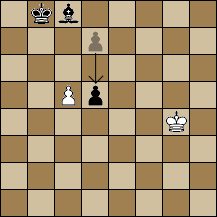
 I suppose I brought it
upon myself. I’ve always been a fan of machines. When I was very young, kids TV programme
I suppose I brought it
upon myself. I’ve always been a fan of machines. When I was very young, kids TV programme 
 Nowadays, if you want to play a
huge, open, expansive, deep roleplaying game, you install
Nowadays, if you want to play a
huge, open, expansive, deep roleplaying game, you install  This list really couldn’t be complete without tipping
my hat to
This list really couldn’t be complete without tipping
my hat to  Now here was a game that you could get into.
Now here was a game that you could get into.  I’d played
I’d played  Most of the games in this list stole my life simply because I kept coming back to them time and time again, even years after I’d finished them or thought I’d seen everything
there was to see in them. A couple of the games in this list stole my life because it took me so long to explore them fully – to do everything there was to do in them, to complete
them on the hardest difficulty level, etc.
Most of the games in this list stole my life simply because I kept coming back to them time and time again, even years after I’d finished them or thought I’d seen everything
there was to see in them. A couple of the games in this list stole my life because it took me so long to explore them fully – to do everything there was to do in them, to complete
them on the hardest difficulty level, etc.
 I bought
I bought  And so we come
to the number one life-stealing game for me, perhaps forever:
And so we come
to the number one life-stealing game for me, perhaps forever: 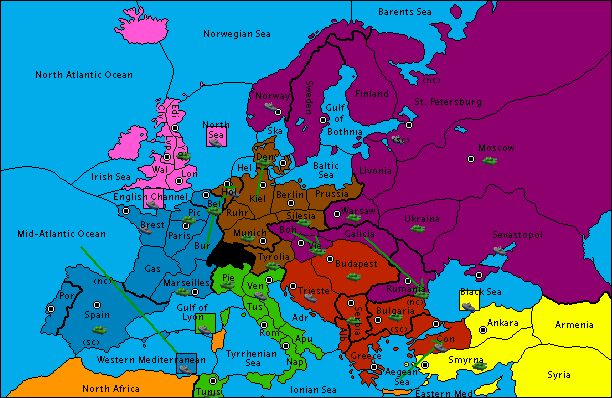


 Download the Windows installer
Download the Windows installer









